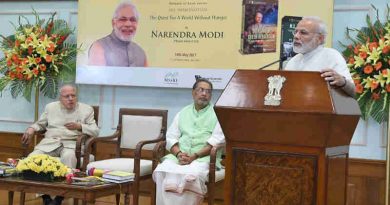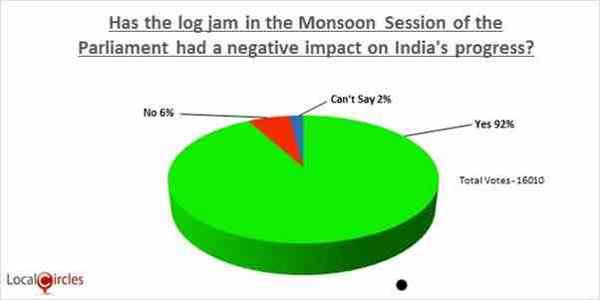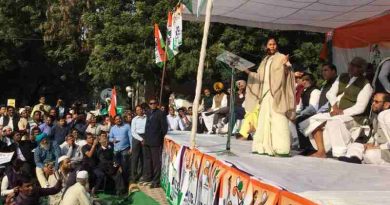How to Deal with Vehicular Pollution in Delhi
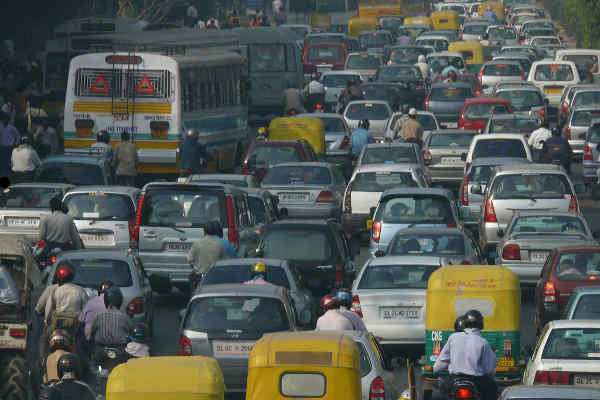
If the government really wants to remove polluting vehicles from the country – or particularly Delhi – it must impose some back-breaking penalties on car owners.
By Rakesh Raman

Strange but true. Nitin Gadkari, a transport minister in India, is showing his reluctance to remove the polluting vehicles from India’s capital New Delhi, which is the most polluted city in the world.
Reacting to the orders of National Green Tribunal (NGT) to enforce a ban by May 1 on the plying of old vehicles in the city, Gadkari said Tuesday it will not be possible to implement NGT orders in such a short period of time. He also stated the government will appeal against the NGT directive in the Supreme Court of India.
Giving 2 weeks to the government to implement its orders, NGT had ordered to ban petrol vehicles older than 15 years and diesel vehicles older than 10 years in the National Capital Region (NCR) region. Gadkari says that government needs 6 months to make a plan for the removal of these vehicles from NCR roads.
NGT has observed that the governments of Delhi, Haryana, and Uttar Pradesh have done little to deal with the pollution menace in their respective states.
Related Stories:
[ How Pollution Makes Delhi a Poisonous Gas Chamber ]
[ Construction Causing Deadly Pollution in Delhi: NGT ]
[ Toxic Air in Delhi Rings Death Knell for Locals ]
But why is NGT so eager to put a ban on polluting vehicles? That is because in a list of 178 countries, India’s Environmental Performance Index (EPI) of 2014 stands at a deplorable rank of 155. Worse, the air quality rank of India is 174. And India’s capital New Delhi is the world’s most polluted city.
Also, NGT wants a quick action on its orders to ban polluting vehicles because an estimated 10,000 people die prematurely in a year because of air pollution in Delhi. In other words, the city pollution claims more than 25 lives every day and this number is increasing at an alarming rate.
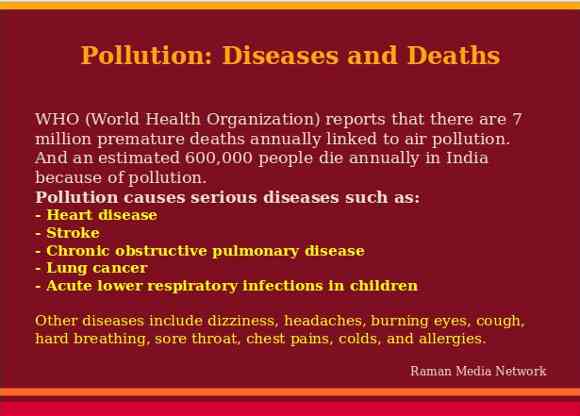
A new report compiled by The Energy and Resources Institute (TERI) among others, warns that if current trends of vehicle population, fuel and emission standards persist in India, PM 2.5 (particulate matter smaller than 2.5 micrometers) emissions will increase three times and NOx (nitrogen oxide) will rise five times in the coming years. That means more pollution-linked premature deaths in India.
The report “Options to reduce road transport pollution in India” reveals that the transport sector contributes about 15 to 50 percent of PM 2.5 emissions in cities, and is a major contributor to NOx emissions.
While the government is not taking any steps to control the vehicle population, the number of vehicles in India has increased from 20 million in 1991 to 140 million in 2011. By 2030, vehicle population is expected to reach an alarming number of 400 million.
The number of vehicles is increasing at a staggering annual rate, thanks to a plethora of car-loan schemes, unrestrained urbanization, and unaccounted money with many Indians in the absence of regulations.
For example, car ownership is the highest at 82 per 1,000 population in a small city Chandigarh and with 54, Delhi is at No. 2 in India. This vehicle density is much higher than the national average of 41.
However, it is not only the vehicular traffic that is contributing toward higher pollution. Road dust, building construction smoke, and industrial pollution are among the other factors of concern.
If the Indian government is serious to save human lives from increasing pollution – particularly from vehicle emissions – it can learn from the examples of an equally populated country China, which has implemented commendable policies to restrict vehicular traffic.
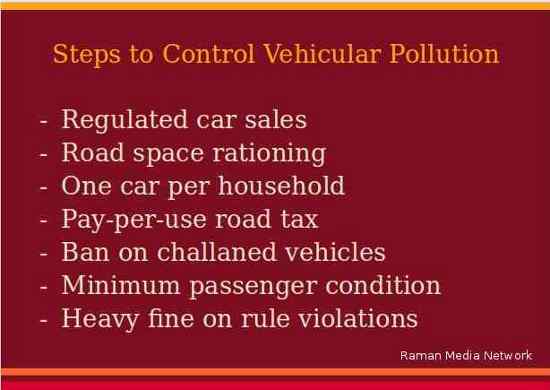
For example, China has implemented road space rationing in Beijing. It is a transportation demand management regulation aimed to reduce traffic by restricting automobile travel. It restricts the use of cars in Beijing, based on the last digits of the license number.
Other road space rationing regulations include the even-odd license plate policy, yellow label car policy, end-number policy and passenger car purchase policy that have been introduced in Beijing since the 2008 Summer Olympics. As a result, China has witnessed a 40% daily reduction of vehicle emissions.
Moreover, there is a passenger car quota system through which a monthly license plate ‘lottery’ is carried out to randomly select the applicants who apply for buying a car in Beijing, China. One has to apply in the first week of each month while the draw happens on the 26th of the month.
Out of every 90 applicants, only one is chosen through the monthly draw of lots while the annual quota limit is 240,000 cars. The applications are received only from eligible citizens who have lived in Beijing for at least five years and paid taxes regularly. Plus, they shouldn’t own another car.
More Chinese cities like Shanghai, Guangzhou, and Guiyang have also restricted car buying through licence plate lotteries and auctions. In Shanghai, for example, where auctions are in place, a new car licence can cost up to $10,000, a price that is higher than most car models. Now it’s not easy to buy a car in China even if you have money.
[ Join: Environment Protection Movement of India ]
There are more encouraging examples. In the U.S., for instance, the number of people who traveled to work by bike increased roughly 60% over the last decade, from about 488,000 in 2000 to about 786,000 during the 2008-2012 period.
This is the largest percentage increase of all commuting modes tracked by the 2000 Census and the 2008-2012 American Community Survey. Many U.S. cities are seeing an increase in bicycle commuters, according to a recent U.S. Census Bureau report.
Moreover, to spread awareness about the perils of excessive car use, a Car-Free Day encourages motorists to give up their cars for a day. While September 22 is observed as the World Car-Free Day, events are organized in different parts of the world on this day to promote mass transit means, cycling, and walking.
While such awareness programs can work in advanced parts of the world, it is very difficult – almost impossible – to teach people in an underdeveloped country like India. Preaching without penalty will not have any impact on Indians.
If the government really wants to remove polluting vehicles from the country – or particularly Delhi – it must impose some back-breaking penalties on car owners.
For example, no household should be permitted to own more than one car. And car parking fee should be very high. Pay-per-use road tax is another punitive option to reduce vehicular traffic.
Plus, only those cars should be allowed to run on roads that are carrying a minimum – say, 4 – passengers in them. Challaned vehicles should be banned for at least a month after imposing heavy fine on them.
With such measures, the Indian government can hope to check vehicular pollution in Delhi and save thousands of humans who are facing slow death in the city’s polluted air.
By Rakesh Raman, the managing editor of RMN Company
You also can read: More Articles by the RMN Editor, Rakesh Raman
Photo courtesy: Wikipedia




